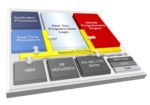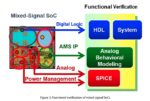You are currently viewing SemiWiki as a guest which gives you limited access to the site. To view blog comments and experience other SemiWiki features you must be a registered member. Registration is fast, simple, and absolutely free so please,
join our community today!
WP_Term Object
(
[term_id] => 157
[name] => EDA
[slug] => eda
[term_group] => 0
[term_taxonomy_id] => 157
[taxonomy] => category
[description] => Electronic Design Automation
[parent] => 0
[count] => 4170
[filter] => raw
[cat_ID] => 157
[category_count] => 4170
[category_description] => Electronic Design Automation
[cat_name] => EDA
[category_nicename] => eda
[category_parent] => 0
[is_post] =>
)
The semiconductor industry growth is increasing exponentially with high speed circuits, low power design requirements because of updated and new technology like IOT, Networking chips, AI, Robotics etc.
In lower technology nodes the timing closure becomes a major challenge due to the increase in on-chip variation effect and… Read More
Can we detect bugs in post- and pre-silicon testing where we can drastically reduce latency between root-cause and effect? Quick error detection can. Paul Cunningham (GM, Verification at Cadence), Jim Hogan and I continue our series on novel research ideas. Feel free to comment.
The Innovation
This month’s pick is Logic Bug Detection… Read More
One of the most significant and oft repeated trends in EDA is the use of information from layout to help drive other parts of the design flow. This has happened with simulation and synthesis among other things. Of course, we think of test as a physical operation, but test pattern generation and sorting have been netlist based operations.… Read More
I’ll never forget first learning about Xilinx when they got started back in 1984, because the concept of a Field Programmable Gate Array (FPGA) was so simple and elegant, it was rows and columns of logic gates that a designer could program to perform any logic function, then connect that logic to IO pads to drive other chips … Read More
The most obvious question here is “why do I need netlist CDC?” A lot of what you’re looking for in CDC analysis is really complex behaviors, like handshakes between different clock domains, correct gray coding in synchronizing FIFOs, eliminating quasi-static signals and the like. Deeply functional, system-level intent stuff.… Read More
Altair PBS Professional™ is the trusted leader in high-performance computing workload management. It efficiently schedules HPC workloads across all forms of computing infrastructure, and it scales easily to support systems of any size — from clusters to the largest supercomputers.
Scheduling for high-throughput workloads… Read More
Similar to my last post on the HCL DevOps webinar series, I will cover their presentation of HCL Compass in a webinar that was recorded on July 29 about how HCL Compass delivers defect tracking and more.
This webinar was presented by Steve Boone, head of product management at HCL Software DevOps, Howie Bernstein, product manager… Read More
The ARC Processor has a rich history. Originally named the Argonaut RISC Processor, it was designed for the Nintendo Game Systems in the 1990s. Argonaut Technologies Limited later became ARC International. My first intimate exposure to ARC was in 2009 when Virage Logic acquired ARC. A year later Virage was acquired by Synopsys… Read More
The number of touchpoints between analog and digital circuits in high performance SoCs is increasing. This is not a problem because it is possible to implement critical analog blocks directly on nanometer scale digital ICs. However, in many cases digital interfaces or digital feedback circuitry configures these analog blocks… Read More
Anna has more than 25 years of expertise in managing complex R&D organizations and programs, giving birth to a number of innovative EDA technologies. She has pioneered the study and development of several generations of IC and package co-design environments and has held senior positions at leading semiconductor and EDA … Read More











Flynn Was Right: How a 2003 Warning Foretold Today’s Architectural Pivot